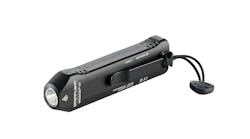Once the code sets, the computer aborts to a high gear failsafe. The abort also causes the transmission to have no reverse. With the vehicle being very heavy and stuck in high gear, it doesn’t move forward very well either. This deliberate computer abort has at times been confused with thinking there is a problem inside the transmission causing a no move condition. As a result, the source of the problem being inside the transfer case is at times overlooked so the transmission is pulled. When the transmission is dismantled, no evidence of a problem related to the complaint is observed.
The transfer case is made of magnesium. There is a steel bearing inside that supports the load of the output shaft and rear drive shaft yoke. This bearing wears into the case compromising the support due to a combination of load and dissimilar metals (steel and magnesium do not cohabit well with each other).
Strangely enough, the computer doesn’t generate a code for a compromised speed signal as one might think. Especially since the irregular air gap of the speed sensor causes the speed reading in the instrument cluster to jump intermittently.
The damage to the transfer case in some instances is so severe, it is not worth rebuilding. But once the problem with the transfer case is corrected and the codes are erased, the vehicle works flawlessly.
But why did code P0746 and/or P0776 store rather than a VSS code? With these codes stored, along with a perceived no move condition and the rear seal not leaking, the real cause to the problem is certainly masqueraded.
The best answer I have is a system description from GM. It says:
The transmission has 2 pressure control solenoids that controls the flow of transmission fluid to engage clutches. The flow is directed through shift valves that allow it to engage different clutches. The vehicle speed sensor and automatic transmission turbine speed sensor contains a permanent magnet surrounded by a coil that gives off a continuous magnetic field. As the vehicle is driven, a speed sensor rotor located near the magnetic pickup of the speed sensor coil also rotates. This rotation produces a variable AC voltage signal. The frequencies of the signals are proportional to the transmission turbine and output speeds. The transmission control module (TCM) uses the signals to calculate the gear ratio. The TCM compares the computed ratio to the commanded gear ratio.
Subscribe to Motor Age and receive articles like this every month…absolutely free. Click here
.jpg?auto=format,compress&fit=max&q=45&w=250&width=250)
.jpg?auto=format,compress&fit=max&q=45&w=250&width=250)
.jpg?auto=format,compress&fit=max&q=45&w=250&width=250)
.jpg?auto=format,compress&fit=max&q=45&w=250&width=250)
.jpg?auto=format,compress&fit=max&q=45&w=250&width=250)

